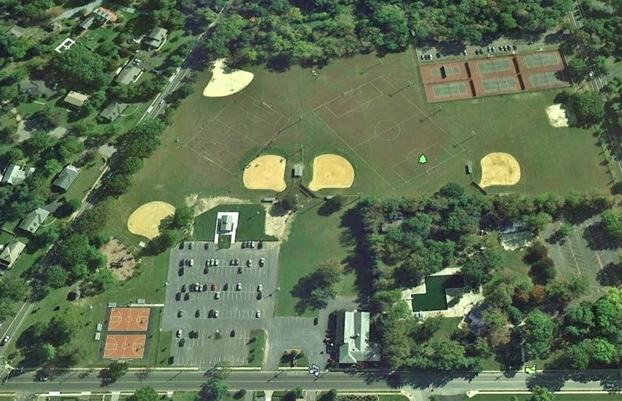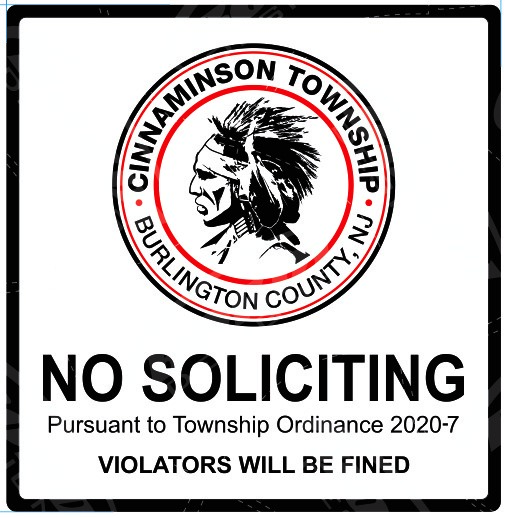Resources
ABOUT
About Cinnaminson
The Township of Cinnaminson is a community of families, neighbors and businesses. Taking our name from the Lenni-Lenape Tribe, we are the place where fresh waters and fresh ideas flow. We pride ourselves on an effective education system, on neighbors who care about our homes and one another and a well-run local government dedicated to serving citizens fairly and economically. We warmly welcome new businesses and support our long-term business partners.
The Lenni-Lenape Tribe came to the Cinnaminson area from somewhere west of the Mississippi. Lenni-Lenape means “original people” which to Cinnaminson they were. They named their hunting grounds Cinnaminson, which meant Sweetwater. One ancient spelling of Cinnaminson was Senamensing; this name belonging traditionally to a trail from the Delaware River through Moorestown and Mount Laurel to the seashore.
Cinnaminson, the Township, was created by an act of the Senate and General Assembly of the State of New Jersey, approved March 15, 1860.
The legislation formed the Township of Cinnaminson by dividing Chester Township, and states in part, “The inhabitants of the township of Chester having become so numerous that it is impracticable for them to meet with convenience and good order in one assembly…the Township shall be divided.” The line of division ran from “the bridge that crosses the South Branch of the Pennsauken Creek, known as Rudderow’s Bridge, to the creek road, where Hackney’s Run crosses same; thence down the said Run to the Rancocas River. The part lying north of said line shall be known as the Township of Cinnaminson
The act further stated, “the inhabitants of Cinnaminson shall hold their first town-meeting at the West Chester schoolhouse in said township on the second Tuesday of March next.”
In accordance with this requirement, the first town-meeting of the new township’s residents was held on March 12, 1861, and at this meeting the act cited above was read and adopted
Several of the measures taken at this initial meeting seem worth noting, not only for their historical import, but also by way of contrast with similar items confronting the township of the present era. A few of these resolutions were: “that the town-meetings assemble at 2:00 PM instead of 10:00 A.M. . .That $1000 be raised for township purposes. . . .That $700 be raised and appropriated for school purposes, by a vote of 140 against a vote of 85 for the sum of $1000.”
It was also resolved at this meeting that “the offer of Samuel Hunter of land near New Albany be accepted for the site of the townhouse” and “that no Justice of the Peace shall issue more than one permit to any pauper.”
Township Map
Farm Land & Preserved Open Space
Below is a list of all the farm land and preserved open space in Cinnaminson
Farmland and Open Space List
Historical Sites
Footlighters
Location: 808 Pomona Road Constructed in the 1890’s, The Phillips School was used as a one-room school for African Americans. Since then the building has been used for several things including: a school for special needs students, an alternative high school, and offices for Cinnaminson Board of Education. Abandoned in 1983 Burlington County Foot-lighters negotiated a lease until they purchased the building in 2000.


Westfield Friends
Location: 2201 Riverton Road The original meetinghouse was built in 1800 and of course burned right to the ground. A new one was made in the same year it burned, 1859 and finished the following year. The structure used today was built in 1963. The present Westfield Friends School had its beginnings in the home of Abraham Warrington, near Fork Landing on the Pennsauken Creek in 1785. The present building dates from 1840.
Lakeview
Location: 1300 Route 130 North In 1929 Lakeview Memorial Association was incorporated to be used for a cemetery or place for the burial of the dead on land of the Jessup Farm. The homestead building date is used in connection to the park operations. In June, 1931 the Corporation reorganized as a non-profit organization.


The Moravian Church
Location: 1921 Cinnaminson Avenue Ground for the church building was purchased in 1860 and building commenced in 1862. The church building was completed the following year and the consecration was held on May 17, 1863. The congregation was formally organized on that same date with a charter membership of nineteen people.
Asbury United Methodist Church
Location: 2492 Andover Road In 1811 Bishop Francis Asbury met with a small group of Christians in Cinnaminson and formed the Asbury Church. The first church, a log cabin built by the early Methodists, was razed by a fire in 1819 and replaced by a stone house of worship. During 1874 this was torn down and replaced by the present red brick church facing Route 130. The church was moved in 1963 to its present location.


Trinity AME Church
Location: 307 N. Forklanding Road This church and the cemetery beside it are the most prominent remains of the small black community known as Wrightsville that was established in this area just after the Civil War. This church, originally known as the Free Gospel Church, was established in 1873, and in 1905 became known as Trinity AME Church. The cemetery, originally named as “Harmony Cemetery for Negroes,” was established some years before the church and contains graves from the 1860’s to the present. Some it the graves are those of civil war veterans. A few of the headstones are hand-engraved.








